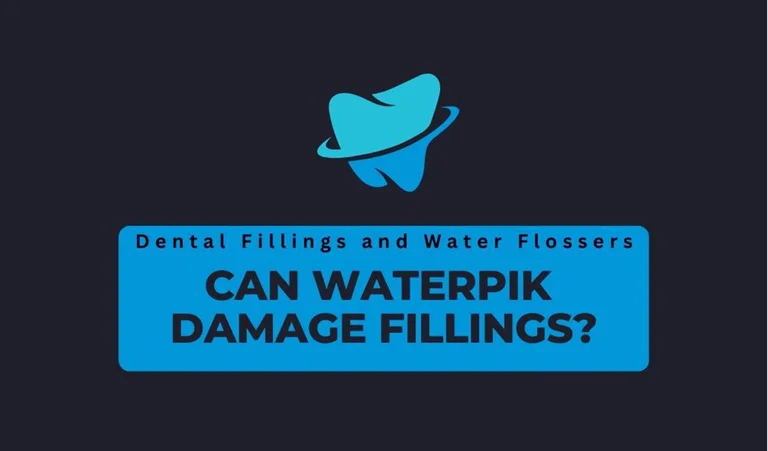
can Waterpik damage fillings
Can Waterpik damage fillings? Dentists recommend specific post-procedure care instructions to ensure longevity of dental restorations. After the initial healing period, which is typically a few days to a couple of weeks, gradually start flossing and the use of a Waterpik instead of immediate application.
It’s important to do Waterpik flossing gently and carefully to avoid putting excessive pressure on the dental work. When using a Waterpik with fillings, crowns, or bridges, follow your dentist’s or oral hygienist’s instructions on proper technique.
Waterpiks are designed to deliver a stream of pressurized water that helps remove food particles and plaque from between teeth and along the gumline. The water pressure from a Waterpik can be highly effective in dislodging debris and bacteria from hard-to-reach areas in the mouth. If used correctly, Waterpiks are generally gentle on dental fillings.
While Waterpiks can be safe for dental fillings, it’s essential to avoid using excessively high water pressure, especially if you have sensitive gums or dental work. High pressure can potentially cause gum irritation or damage to fillings in some cases.
It’s important to use a water flosser properly to avoid any potential damage to dental fillings. Direct the water stream at an angle toward the gumline and between teeth rather than directly at the fillings.
Avoid using excessively high water pressure, as this could potentially damage dental fillings or cause gum irritation. Materials used in dental fillings like amalgam (silver) or composite resin are resistant and strong in nature.
Older or poorly maintained fillings may be more vulnerable to damage. If the filling is loose, cracked, or already compromised, the water pressure from a water flosser could potentially dislodge or damage it. Using excessively high water pressure can increase the risk of damaging dental work or causing gum irritation.
Following proper technique, using an appropriate pressure setting, and seeking guidance from your dentist can help you use a water flosser effectively without compromising your dental fillings’ integrity.
Fillings restore the structural integrity of teeth affected by cavities or fractures, preventing further damage. Moreover they create a barrier against harmful bacteria, reducing the risk of infection.
Modern fillings blend seamlessly with natural teeth, preserving your smile’s appearance. Follow your dentist’s recommendations for caring for your fillings, including any specific aftercare instructions provided after the procedure.
For a healthy smile, Brush your teeth thoroughly at least twice a day with a fluoride toothpaste to remove plaque and bacteria. Incorporate daily flossing into your routine to clean between teeth and along the gumline.
Can Waterpik damage fillings? The type of filling in your mouth determines whether it is susceptible to damage from a water flosser. Amalgam and composite resin fillings are generally sturdy and less likely to be damaged by the water pressure generated by a water flosser.
Avoid directing the water stream directly at the fillings or dental work at a close range. Instead, aim the water at an angle toward the gumline to clean between teeth effectively. Following proper technique, using appropriate pressure settings, and seeking guidance from your dentist can help you use a water flosser effectively without compromising your dental fillings’ integrity.
It is better to avoid flossing or using a Waterpik immediately after getting dental work such as filling. Because the tooth and surrounding tissues may be sensitive, and there could be some temporary irritation or discomfort. It allows the dental work to settle in place without disturbance.
Excessive water pressure could potentially pose a risk to dental restorations, for example, composite fillings. Patients with composite restorations is advised to use a moderate pressure setting to remove debris and ensure good gum health without subjecting their dental work to unnecessary stress.
Water flossers can improve gum health by removing plaque and reducing the risk of gum disease, it is essential to use them correctly. Overuse or incorrect use, especially at high-pressure settings, can potentially lead to gum damage. Delicate gum tissue can be sensitive to excessive water pressure, which may result in irritation or even injury.
Waterpik can be relatively expensive compared to traditional dental floss. Some users find it challenging to get the hang of using a water flosser correctly, particularly when it comes to managing water pressure and positioning the nozzle for optimal cleaning.
No, mouthwash does not dissolve dental fillings. Dental fillings are typically made of amalgam (silver fillings) or composite resin (tooth-colored fillings). It’s important to note that while mouthwash does not dissolve fillings, it’s still essential to follow your dentist’s recommendations for oral care and hygiene.
Skateboarding is a trendy sport that is popular with the younger generation. And because it…
Are you ready to tear your travel card? That is precisely what you need to…
91 Club is an online gaming and entertainment platform that offers a diverse range of…
Daman Game is a platform that offers a variety of games such as Color Games,…
Primewire Primewire is a free movie streaming website offering an expansive library. Popular television shows…
Is flossing once a day enough? It is a simple yet powerful habit that will…